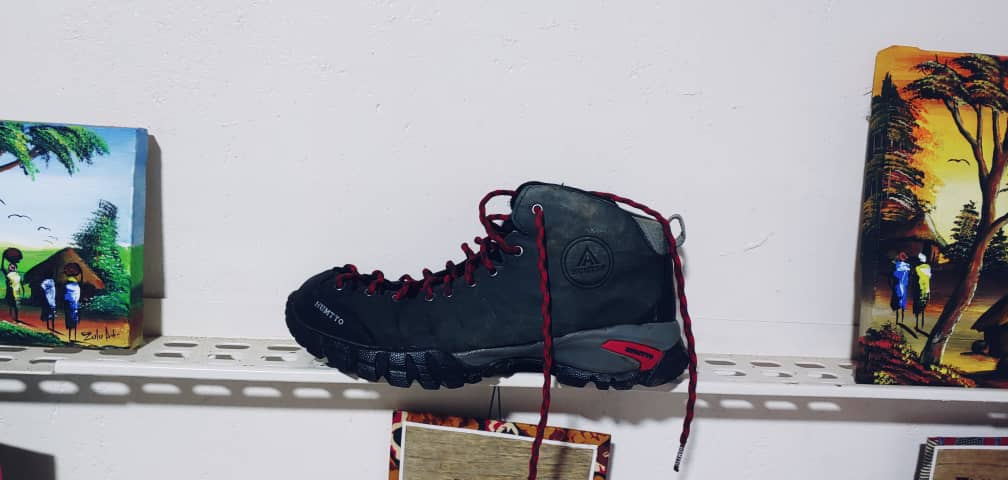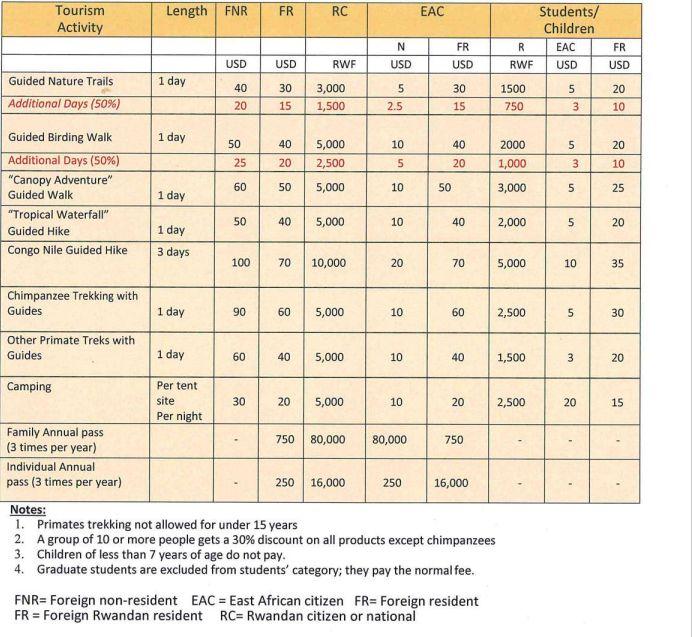
The Best Things to Do in Nyungwe Forest National Park
Several things to do in Nyungwe Forest National Park than you could ever imagine. Sprawling over 1000 square kilometers on the southwestern side of Rwanda, this stunning Protected Area is home to over 80 mammal species including 13 primate species and 320 species of birds. Occupying a great montane rainforest wilderness in the Albertine Rift, in the South-East of Lake Kivu, Nyungwe Forest National Park is one of Rwanda’s heavyweight Reserves and a Sanctuary for some of the Continent’s healthiest populations of Eastern chimpanzees.
Diverse and dramatic on its own, the area is also a Safari destination that combines easily with Volcanoes National Park (for gorilla trekking) and Akagera National Park (for wildlife safaris) in Rwanda. Regardless, however, whenever you fit Nyungwe Forest National Park into your itinerary, here’s what we consider the best things to do in the Park. Book Now

Any visitor to Nyungwe Forest National Park would be remiss to leave without experiencing a Nyungwe chimpanzee safari. The Conservation Area is home to over 500 chimpanzees, with two habituated communities (a 60-member chimpanzee community in Uwinka, and a 30-member chimpanzee community in Cyamudongo forest).
You will need to be 12 years old to qualify to trek these endangered Great Apes in their natural habitat and learn about their exceptional human-like behavior. Considering you will be walking through varying terrains, it’s advisable to brace yourself by wearing hiking boots, long-sleeve shirt/s, safari pants, gardening gloves, a safari hat, and carry a backpack (for storing your phone, binoculars, camera, drinking water, snacks, and others).
Flock Together: A Birding Paradise
With over 320 species on record, there’s no shortage of chances to see lots of birds, including Albertine Rift endemics in Nyungwe Forest National Park. The Park is somewhat of a twitcher’s place to be.
The Kamiranzovu Marsh Trail is a wonderful birding spot all year round and is hard to beat even during the wet season. Flocks of Red-chested flufftail, Grauer’s swamp warbler, Mountain Buzzard, the Black-faced woodland warbler, Nuemann’s warblers, and African Marsh Harrier are common along the trail.
The thick undergrowth and the incredible photography of Nyungwe Forest make a guided forest walk tour ideal. The adventure is an excellent experience to closely observe the jungle of wild Rwanda while sighting unmissable wildlife species such as forest elephants, buffaloes, vervet monkeys, blue monkeys, black and white Colobus monkeys, red-tailed monkeys, and many others.
Some of the unmissable trails to try out in this Park include Igishigishigi, Isumo, Kamiranzovu swamp, Mount Bigugu, Imbaraga, Umugote, Umuyove, Ndambarare waterfall Trail, and the Source of the Nile Trail among others.
The Canopy Walk
No safari to Nyungwe Forest National Park would be complete without a canopy walk. Attempt to walk through the 160-meter-long suspension Bridge that towers 70 meters high/above the forest floor. This walk can be explored via the Umuyove, Imbaraga, or the Igishigishigi Trail.
While on this well-maintained footpath of the canopy walk, expect to see lots of colorful birds, butterflies, orchids, and forest species that will take your breath away.
The Cyinzobe Trail
Cyinzobe a three-day hike on the trail, offers a three-day adventure starting from the Uwinka Visitor Centre, allowing hikers to enjoy the magnificent view of Kamiranzovu swamp and its waterfall along the park’s west boundary.
The hike covers approximately 25 km from Uwinka to Gisakura Park reception. The highest elevation is 2450 m and the lowest elevation is 1812 m The first day takes about three hours(depending on the fitness level of hikers) to reach the first camping site and is ranked as moderate.
The second one is about six hours long and ranked as strong. The third, the last, is about three hours like the first and is also ranked as moderate. The three-day hike starts from Uwinka Visitor Centre at 1:00 PM with three people minimum, the trail offers two nights in the park in wooden cabins. Therefore, you don’t have to bring anything apart from hiking clothes
When to visit Nyungwe Forest National Park
Nyungwe Forest National Park has two seasons: The wet season which runs from March to May, then October to early December. During this time, the land of green and verdant, vegetation dense, and forest trails muddy and slippery. This makes it more challenging to walk through the forest, considering all activities are done on foot. However, this is when you see lots of newborn animals and predator activity. Also, visitors have the advantage of unforgettable birding and photography opportunities.
In the dry season (June to September and December to February), visitors can enjoy chimpanzee trekking, forest walks, canopy walks, and others while having a better view of the surrounding areas. Forest trails are at their best during the dry season, hence providing less challenging walks. However, the peak season also brings its challenges with many visitors having the same idea. For this reason, booking accommodation is more challenging in the dry season hence you shouldn’t start booking your trip at least 6-12 months before intending to travel. Additionally, costs rise by 20 to 40 percent, but with adventures being far better in the dry season, and it is what you wish to see, we think the costs are worth paying. Book Now



